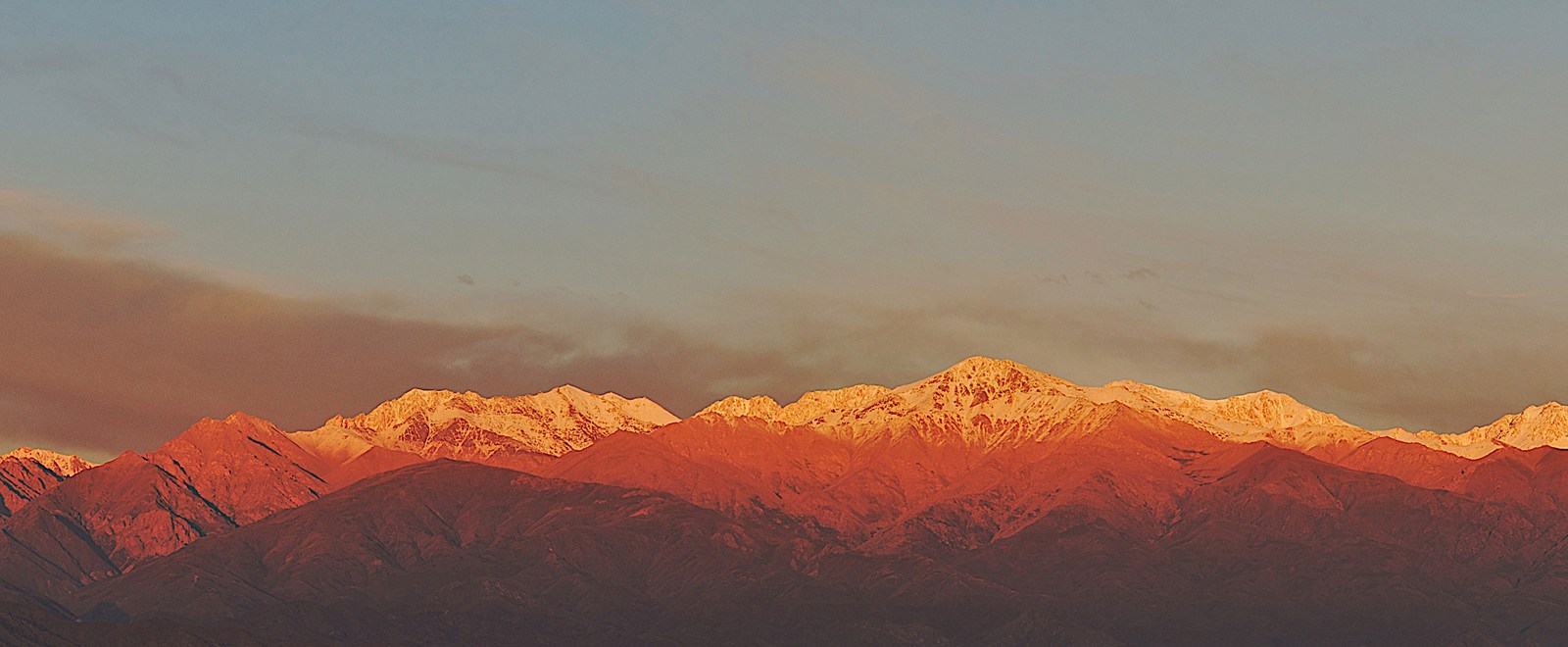
The Vines of Mendoza
As mentioned in PART I, the premise of experimentation and discovery has been part of The Vines Private Vineyards from the very beginning. We talked about the red Rhone trilogy and now we will discover the white grapes that are amazing us by their adaptation in our terroir and beautiful expression. For the white grapes, Roussanne, Marsanne and Viognier are the key grapes, and a well-known trilogy in the Rhone Valley.
ROUSSANNE
In Châteauneuf-du-Pape, Roussanne is one of six white wine grapes allowed by AOC law. While the rules of the appellation allow for the grape to be blended with red grapes, not many producers blend the red and white grapes in the Southern Rhone. Aside from Châteauneuf-du-Pape, in the part of the Rhone valley, the grape is also planted in Provence and Languedoc-Roussillon. Roussanne is used most often in the Northern Rhone in the appellations of Hermitage , Crozes Hermitage, St. Joseph and St. Peray. In all those appellations, Roussanne is most often blended with Marsanne.
Roussanne is a grape that requires warm, sunny conditions to ripen. Without that climate, the grape cannot achieve phenolic ripeness and instead, can easily develop mildew or rot. Roussanne grape is small in size and grows in compact bunches. It’s because of its tight clusters that do not allow for much air between the grapes that makes it easy for rot to develop. When ripe, the berries take on a gold, copper tinted coloring. Once harvested, the berries are also prone to oxidize quickly.
Roussanne is a late ripening variety that produces powerful white wines that offer pungent perfume featuring scents of fresh flowers, peaches, herbs, pears, spice, roasted nuts and hints of pepper. Wines produced from Roussanne are quite rich and can even develop a silky, exotic, oily texture. Roussanne based wines are best enjoyed either within the first few years of bottling or after they have been cellared for several years. Roussanne blended with Marsanne is the perfect pairing. Marsanne adds the fat, richness, oily textures and sweetness to the wines, while Roussanne brings more acidity, elegance and aromatic complexities to the wine.
MARSANNE
Marsanne is the most popular white grape planted in the Northern Rhone wine region. In Hermitage, where the fruit reaches its best expression, it is usually blended with Roussanne and Clairette. Marsanne adds depth and rich textures to the wine. Through blending, the grape helps produce rich, deeply colored wines with flavors and scents of roasted nuts, pears, white peaches, honeydew melon, spice and flowers. With age, Marsanne based wines deepen in color and complexity.
Marsanne is a vigorous grape. Small in size, the bunches are not too compact, which allows for air to penetrate the bunches. The roots have the ability to burrow deep into the soil, looking for nourishment. Marsanne prefers rocky and dry climates, and that is why it seems to feel at home in Uco Valley. When ripe, the berries take on a brownish, golden hue. The picking time is crucial because as the grapes achieve ripeness, the fruit can lose its acidity rather quickly. The grapes are small, with a skin that combines gold, green and brown hues. Marsanne is an interesting grape to harvest. We tend to pick the fruit just before it achieves optimum ripeness, in order to retain as much acidity as possible, to add balance and freshness to the wine.
Marsanne can produce both dry white wine and sweet white wine. When Marsanne is used to produce sweet wine. When sweet wine is produced, more often than not, it is made using the Vin de Paille method. this labor intensive winemaking process is also known as a straw wine. Straw wines take their name due to the process that requires the grapes to be dried on straw mats in the sun, before the extremely concentrated, sweet, raisened juice is pressed and fermented. Pablo Martorell, our head winemaker, is already experimenting this technique for one of our private vineyard owners who is a fan of this style of wine.
VIOGNIER
Viognier grapes achieve their best expression in the Northern Rhone Viognier, a white grape is the only allowed by AOC law to be planted in planted in Condrieu and Grillet. Viognier grapes are also planted in other Rhone areas. In Cote Rotie, close to Condrieu, the fruit is blended with Syrah to produce one of the most, exotic and erotic style of wines available from any wine region. Viognier is a wine best enjoyed in its youth for its aromatics of white peach, spice, honeysuckle, roasted nut and floral elements.
Viognier reaches its peak in hillside plantings with limestone, mica, schist and granite terroirs in cooler climate zones. The berries are small and the harvesting time can be crucial as the acidity can drop quite quickly when ripe.
Viognier can be used to produce both dry, white wine, or sweet, late harvest wine from grapes with botrytis or noble rot.
There are five private vineyard owners that are already making wine with these amazing grapes, in addition to Pablo Gimenez Riili, co-founder at the Vines of Mendoza, and the well-known winery Ver Sacrum, which is part of our Winemakers Village project Here are some of these wines already sold in Argentina.
Del Moño Rojo Roussanne 2015
Deep yellow hued wine featuring scents of fresh flowers, peaches, herbs, sweet spice, and hints of roasted nuts. In the mouth it is quite rich and silky, and exotic with an oily texture.
Del Moño Rojo Marsanne 2015
Bright yellowish wine with flavors and scents of pears, white peaches, honeysuckle and melon. Crisp and rich simultaneously and enhanced by a very pleasant long finish.
Ver Sacrum Jeisha de Jade 2016
A very attractive blend of Marsanne and Roussanne. Its elegance, complexity and freshness are highlighted by its spice, pear, white pepper nose and hints of white flowers. Its acidity and body create a perfect texture.
For the moment, these wines can only be found in Argentina.